S and MM estimators in multivariate analysis
S-estimates are obtained minimizing an M-scale estimate (see the guide or page Smult for more details). MM estimates keep the estimate of the scale fixed (coming for example from the S procedure) and reestimate the location and the shape matrix in order to improve the low efficiency of S-estimators.
Example 1
The code below loads the heads dataset and launch the S outlier detection procedure
% Load the data
load('head');
Y=head{:,:};
% Use function FSM (Forward search in multivariate analysis with automatic outlier detection purposes)
[out]=Smult(Y,'plots',1,'conflev',1-0.01/size(Y,1));
No outlier is declared using the Bonferroni threshold.
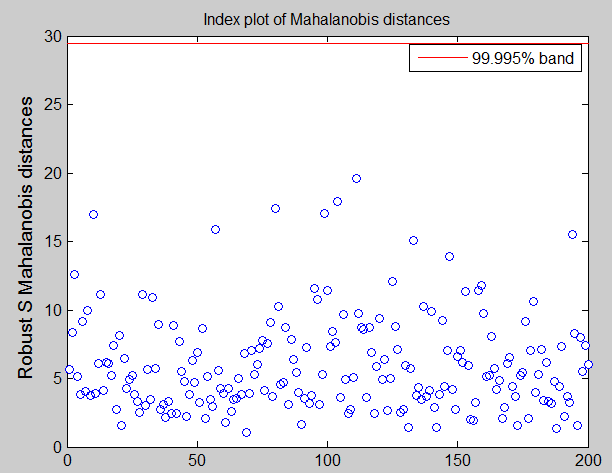
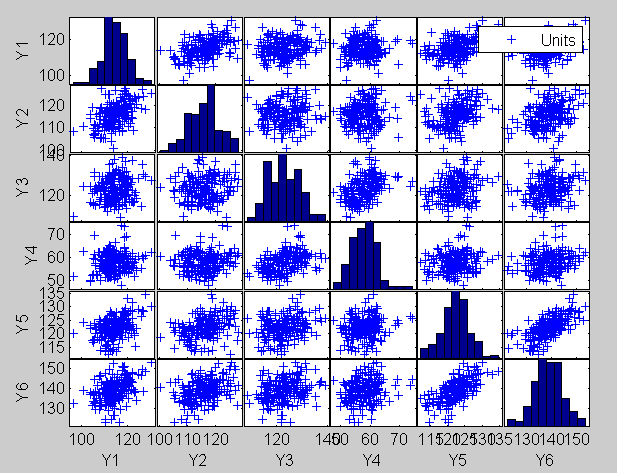
Example 2
The code below loads the mussels dataset and performs an automatic outlier detection procedure in the original scale and then in the BoxCox transformed scale.
Analysis on the original scaleload('mussels.mat');
Y=mussels{:,:};
[out]=Smult(Y,'plots',1,'conflev',1-0.01/size(Y,1));
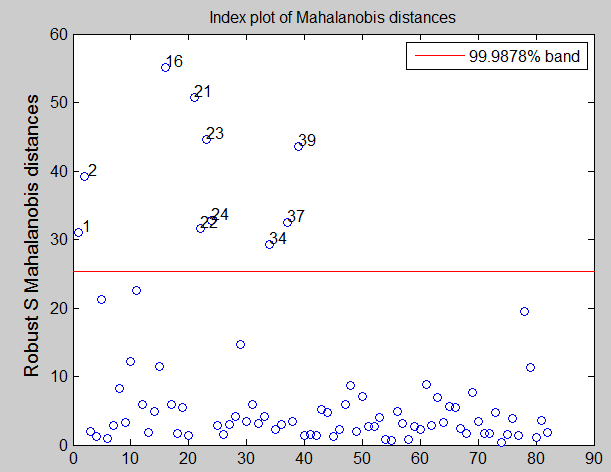
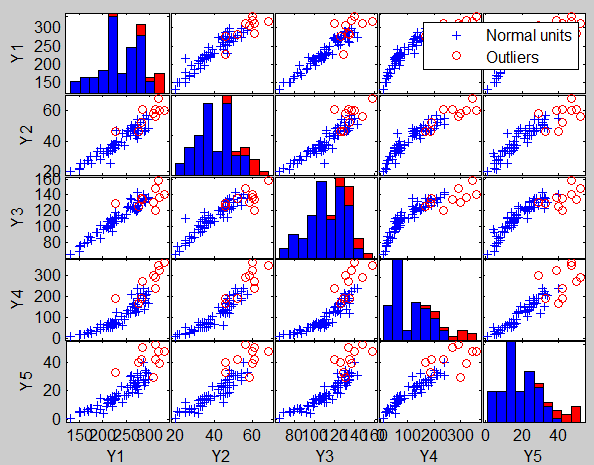
Analysis on the transformed scale
load('mussels.mat');
Y=mussels{:,:};
la=[0.5 0 0.5 0 0];
v=size(Y,2);
Y=normBoxCox(Y,1:v,la);
Smult(Y,'plots',1,'conflev',1-0.01/size(Y,1))
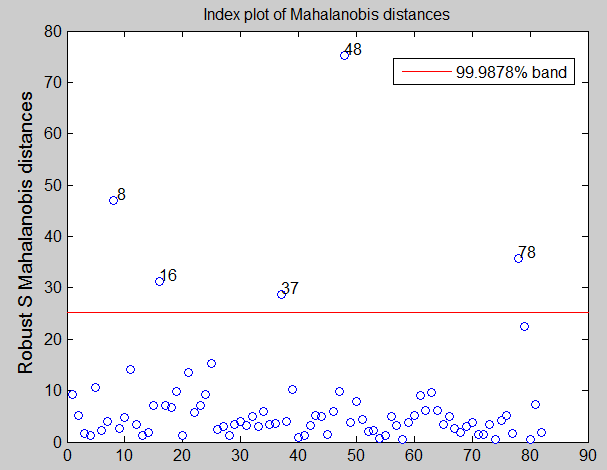
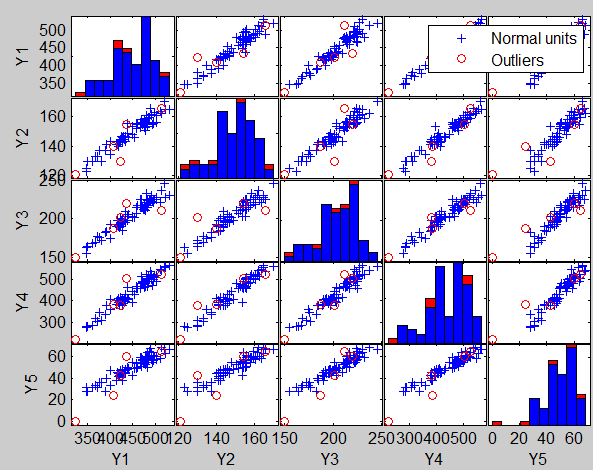
The units declared as outliers using multivariate S estimators are exactly the same of the FSM procedure (see reference help page).
| Functions |
• The developers of the toolbox• The forward search group • Terms of Use• Acknowledgments